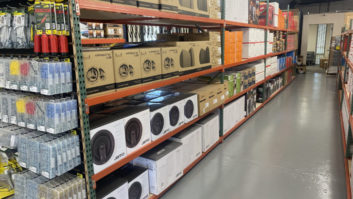On the heels of a bruising 2007, cordless-phone makers will largely step back from pushing advanced features to focus instead on new designs in the DECT market.
The cordless category suffered a sharp downturn in the third quarter of 2007, dropping 25 percent in unit volume and 20 percent in dollars, according to The NPD Group. The downturn has largely claimed 2.4GHz technologies (both analog and digital) and has led many major manufacturers to abandon the technology altogether in 2008.
Instead, phone manufacturers will focus on the one bright spot in the cordless industry — DECT 6.0. While every other frequency has seen unit and dollar declines, unit sales of DECT phones have soared while dollar volumes climbed from $1.2 million in Q3 2006 to $35 million in the third quarter of 2007.
“DECT offers tangible benefits to the consumer [such as] longer battery life and longer range,” said Andy Mintz, senior sales VP, Philips. “Plus, it’s a pure digital platform, so it’s totally secure.”
DECT 6.0 is an opportunity for cordless manufacturers to “wipe the slate clean” of the persistent race for ever higher frequencies, said Tom Bratton, sales and marketing VP, Thomson Consumer Network Solutions. Thanks to smaller components, DECT phones provide a more flexible palette for designers.
Still, DECT’s growth has not lifted the market as a whole.
The industry has been pinched by several factors, manufacturers say. Some of the pain is due to cord cutters — cellular users who discontinue (or never order) landline service. A recent study by In-Stat found that nearly a quarter of home phone users were willing to switch completely to a mobile service exclusively and that the ranks of cord cutters are growing steadily.
“The cellular business has hurt us,” said Brendan Morris, president, Uniden. “The younger demographic is perfectly comfortable not owning a landline.”
Attempts to replicate mobile phone features — such as the use of large color LCD screens with photo caller ID — to lure the cellular generation into cordless have largely flopped, said Matt Ramage, senior product development VP, VTech. “Those features just didn’t translate,” he said.
Bluetooth, however, holds out the hope of keeping at least keeping a cordless system in the house. Panasonic, VTech and Thomson will all offer a Bluetooth-enabled cordless system at International CES.
“We have to get the price point on Bluetooth products down to appeal to cord cutters,” Bratton said, adding that their impact on the overall market is probably over-stated.
The product replacement cycle is also longer than in other categories, often reaching five to seven years, said Bill Taylor, communications group VP, Panasonic. “People will hold onto their phones forever, and just keep buying replacement batteries.”
Despite the downturn, phone makers can stay relevant by tying their handsets to new technologies such as VoIP and mobile phones, argued Adam Somer, communication services president, American Telecom Services. “Consumers will always have cordless handsets in their home. They’ll just look different.”













